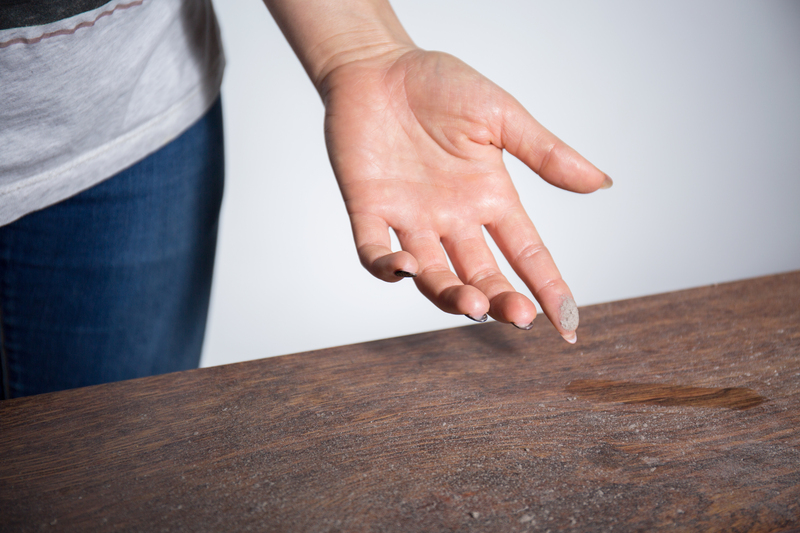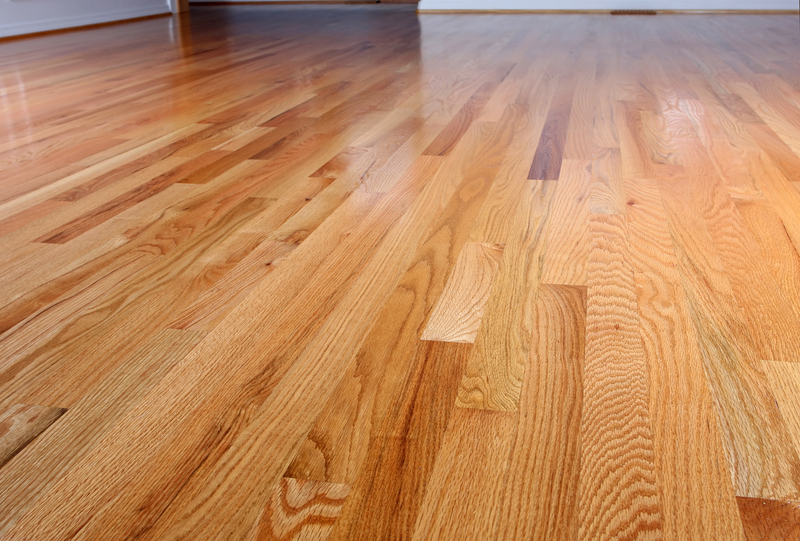Master the Art of Damp Odor Removal
Posted on 25/09/2025
Master the Art of Damp Odor Removal
Whether it's your home, office, or rental space, damp odors can be an unpleasant and persistent problem. Musty smells not only affect comfort but may also indicate deeper issues related to moisture and mold. Removing damp odors effectively requires more than spraying air freshener--it demands a thorough approach to root causes and resilient removal methods.
In this comprehensive guide, you'll learn everything you need to know to master the art of damp odor removal using effective, lasting solutions. Discover common sources, prevention strategies, removal techniques, and trusted tips for every corner of your living space.
Understanding the Root Causes of Damp Odors
Before tackling damp smell removal, it's essential to recognize what causes these odors in the first place. Moisture, organic material, and poor ventilation often create the perfect storm for that unmistakable musty scent.
Common Sources of Damp Odors
- Basements: Poorly ventilated and prone to water intrusion.
- Attics: Limited airflow allows condensation and mold to thrive.
- Bathrooms: Constant water and steam lead to lingering humidity.
- Laundry rooms: Damp clothing or leaks may foster mold and mildew.
- Carpets and Upholstery: Easily absorb and retain moisture, especially after spills.
- Closets: Stored items and reduced air movement enable mustiness.
Why Is Damp Odor a Problem?
Persistent damp odors can indicate hidden water damage or mold growth. They may trigger allergies, asthma, and respiratory irritation. Plus, musty air impacts comfort and can even damage personal belongings over time.

How to Identify the Source of Musty Odors
Effective damp odor elimination begins by locating the exact cause. Here's how to pinpoint problem areas:
- Follow your nose: Smell-test different spaces and items.
- Look for visible mold or mildew: Check corners, behind furniture, and on walls or soft surfaces.
- Inspect for dampness: Touch suspect areas to feel for excessive moisture.
- Check for leaks: Pay attention to plumbing, window frames, and roofs.
- Monitor humidity levels: Use a hygrometer to identify rooms with elevated moisture.
Once the source is found, you can plan a targeted damp odor removal strategy.
Proven Methods for Damp Odor Removal
1. Eliminate the Cause of Moisture
- Fix leaking pipes, roofs, or windows immediately.
- Seal foundation cracks and waterproof vulnerable areas.
- Install or enhance vapor barriers where necessary, like basements and crawlspaces.
Removing the possibility of new moisture is your first--and most crucial--step in the battle against musty smells.
2. Increase Ventilation and Air Flow
- Open windows and doors regularly to allow cross-ventilation.
- Use exhaust fans in bathrooms, kitchens, and laundry rooms.
- Consider installing a whole-house ventilator or dehumidifier.
3. Control Indoor Humidity
- Keep indoor humidity below 50% whenever possible.
- Use portable dehumidifiers in damp-prone areas.
- Monitor humidity with a quality hygrometer.
Consistent humidity control is fundamental to preventing the return of damp odors.
4. Remove and Clean Affected Materials
- Wash washable fabrics: Curtains, bedding, and clothing should be laundered in hot water with a cup of white vinegar to neutralize odors.
- Shampoo carpets and upholstery: Use a carpet cleaner and an enzyme-based solution for persistent smells.
- Dispose of unsalvageable items: Severely damaged carpet pads, drywall, or insulation may need to be replaced.
5. Employ Natural Odor Absorbers
- Baking soda: Sprinkle on carpets and upholstery, leave overnight, and vacuum for absorbing odors.
- Activated charcoal: Place sachets or bowls in musty areas to trap smells.
- White vinegar: Bowl of vinegar can help neutralize air-borne mustiness.
- Coffee grounds: Use fresh grounds in breathable containers for strong-odor areas.
6. Deep Clean with Antimicrobial Solutions
- Hydrogen peroxide solution (3%): Effective for hard surfaces and some fabrics.
- Specialized mold removers: Use products specifically made to kill mold and mildew.
- Enzymatic cleaners: Particularly useful for organic odors in soft furnishings.
Always test cleaning solutions in an inconspicuous area and follow manufacturer's instructions.
How to Prevent Damp Odors from Returning
After effective damp odor removal, prevention is key to maintaining a fresh environment. Adopt these expert strategies:
- Regularly inspect vulnerable areas like basements and window sills for new leaks or water intrusion.
- Utilize silica gel packs in storage boxes and closets to absorb residual moisture.
- Avoid overwatering houseplants--excess water can raise humidity and promote mold.
- Schedule annual HVAC maintenance to ensure optimal airflow and humidity control.
- Maintain gutters and downspouts for effective drainage.
Seasonal Damp Odor Prevention Tips
- In spring, check for melting snow leaks or condensation buildup.
- During summer, run air conditioning to reduce humidity.
- Fall is ideal for inspecting roofing and exterior caulking.
- In winter, monitor for window condensation and use dehumidifiers wisely.
Room-by-Room Guide to Damp Odor Removal
Mastering the art of musty smell elimination means addressing each room's unique challenges. Here's your specialized action plan:
Basements
- Check sump pumps and drainage systems regularly.
- Consider a vapor barrier for floors and walls.
- Use heavy-duty dehumidifiers in the dampest months.
Bathrooms
- Clean tile grout with a bleach solution every month.
- Install a high-capacity exhaust fan if feasible.
- Wash bath mats frequently and hang towels to dry.
Kitchens
- Check for sink cabinet leaks and fix immediately.
- Don't let food debris accumulate; clean garbage disposals weekly.
- Keep pantry items in airtight containers.
Laundry Rooms
- Check behind and beneath washing machines for hidden leaks.
- Leave washer doors open after use to prevent mildew growth inside drums.
- Don't allow damp clothes to linger in the machine or hampers.
Closets and Storage Areas
- Rotate and air out stored clothing and linens regularly.
- Keep shoes and bags off the floor to enhance air circulation.
- Use natural cedar blocks or sachets to combat odors and insects.
Frequently Asked Questions about Damp Odor Removal
What's the best home remedy for damp odor?
Baking soda and white vinegar are two of the most effective, safe, and natural solutions for small areas. For larger jobs or recurring odors, invest in a quality dehumidifier and address the moisture source directly.
How long does it take to remove musty smells?
With thorough cleaning and proper ventilation, minor damp odors can disappear within hours or days. Severe cases involving hidden mold or water damage may require professional help and could take several weeks.
Are air fresheners an effective solution for musty smells?
Air fresheners mainly mask unpleasant scents but do not solve the underlying moisture problem. Always prioritize eliminating dampness at its source for true long-lasting odor removal.
How do I know if I need professional help?
If musty odors linger after multiple cleaning attempts or if you discover significant mold or water damage, consult a certified mold remediation specialist immediately.

Products and Tools for Damp Odor Removal
- Dehumidifiers: Vital for keeping humidity low in basements, crawlspaces, and laundry rooms.
- Mold & mildew removers: Available in sprays and powders for bathroom and wall surfaces.
- Activated charcoal bags: Useful for closets, cars, and small rooms.
- Air purifiers: HEPA filter models help remove spores and allergens from the air.
- Hygrometers: Digital sensors help you monitor and maintain ideal humidity.
Key Takeaways: Achieving Lasting Freshness
- The art of damp odor removal begins with eliminating moisture sources and improving ventilation.
- Clean affected materials thoroughly and use natural odor absorbers for lingering smells.
- Maintain humidity levels and regularly inspect vulnerable areas to prevent recurrence.
- Target your approach room by room for comprehensive freshness throughout your home.
- Don't hesitate to seek professional support if mold or water damage is severe.
Empower Yourself: Breathe Easy and Enjoy a Fresh Home
Mastering damp odor removal is a rewarding process that enhances indoor air quality, health, and comfort. With the strategies and tips outlined above, you're fully equipped to tackle musty smells--for good! Fresh, inviting spaces are just a few steps away.
If you found this guide on damp odor removal helpful, share it with friends and family or bookmark for future reference. Your path to a fresher, healthier living space starts now!



